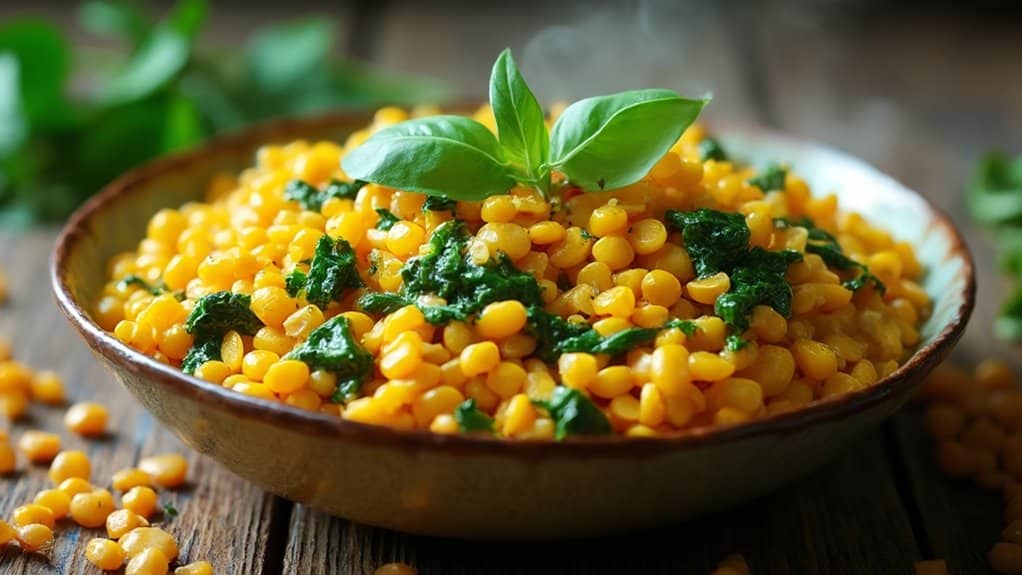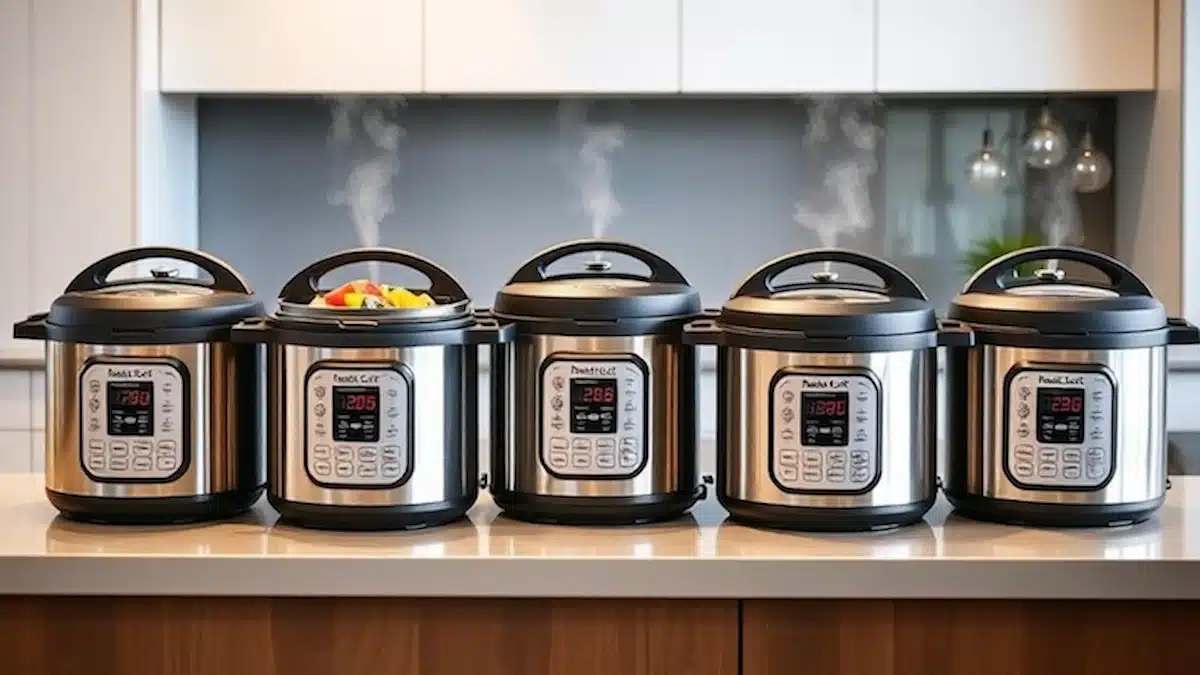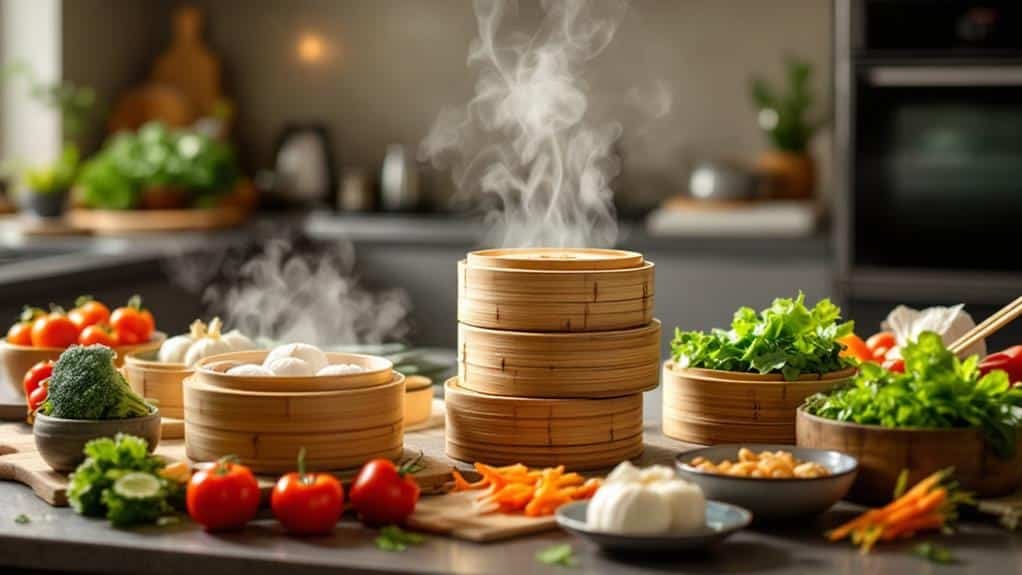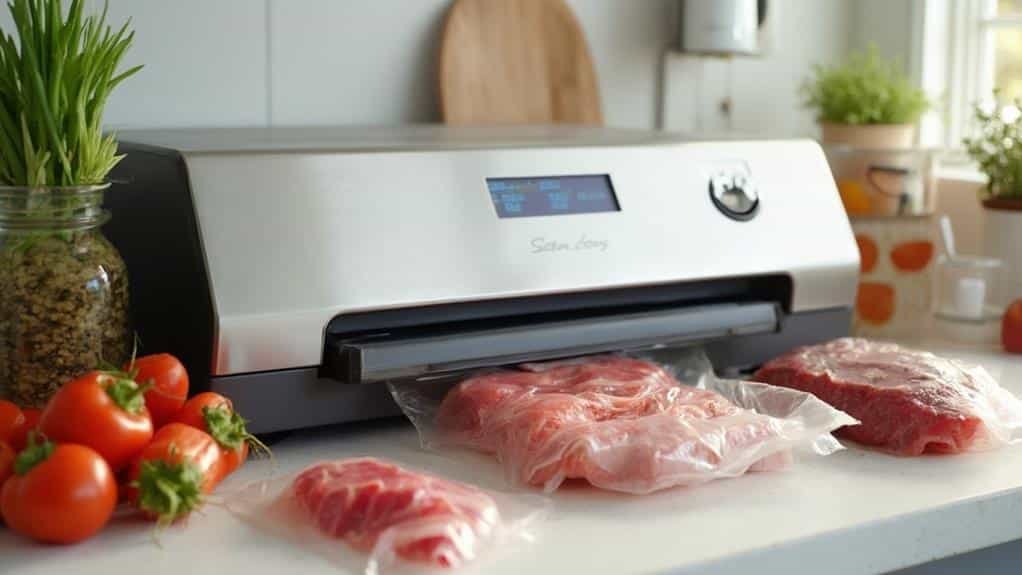Managing blood sugar levels doesn’t mean sacrificing flavour, especially in Indian cuisine. The rich tradition of Indian lentil dishes offers both nourishment and great taste, making them a wise choice for anyone seeking healthier eating options. Whether you’re looking for lunch recipes, healthy dinner ideas, or vegetarian options, these dishes are designed to support stable blood sugar levels while satisfying your craving for authentic flavours.
Lentils are a staple in Indian diets, renowned for their high fiber and protein content, which helps maintain steady blood sugar levels. From hearty dals to flavorful curries, these dishes combine lentils with ingredients like tomatoes, spinach, and warming spices to enhance the nutritional value of your meal. The best part? They’re easy to make and perfect for meal prepping.
This guide explores proven Indian lentil dishes that not only taste great but also help regulate blood sugar levels. You’ll find leisurely, healthy breakfast, lunch, and dinner recipes—perfect for anyone looking to add healthy Indian dishes to their meal plan. Dive into recipes like Masoor Dal Tadka, Chana Dal with Spinach, and Moong Dal Khichdi—each packed with plant-based protein and fiber.
Whether you manage diabetes or aim for a balanced diet, these Indian vegetarian recipes can make a big difference in your daily routine. Let’s discover the delicious way to maintain blood sugar!
Best Indian Lentil Dishes to Manage Blood Sugar Highlights
- Dal Tadka has a low glycemic index of approximately 25, making it excellent for blood sugar regulation.
- Chana Dal combines slow-release carbohydrates with spinach to enhance insulin sensitivity benefits.
- Moong Dal with turmeric and cumin is light, easily digestible, and helps maintain stable glucose levels.
- Masoor Dal retains a high fiber content when cooked properly, which slows carbohydrate absorption and prevents blood sugar spikes.
- Before cooking, adding fenugreek seeds, curry leaves, and sprouted lentils enhances their blood sugar-regulating properties.
The Science Behind Lentils as Blood Sugar Regulators
Lentils, humble legumes found in nearly every Indian kitchen, have remarkable power in managing blood sugar levels. The secret lies in their impressive nutritional profile, particularly their high fiber and protein content, which slows down digestion and prevents rapid spikes in glucose.
What makes lentils truly special is their exceptionally low glycemic index. Unlike refined carbohydrates that spike blood sugar, lentils release their energy slowly and steadily into the bloodstream.
This matters tremendously for anyone managing diabetes or pre-diabetes conditions. The complex carbohydrates in lentils require more time to break down, creating a gradual release of glucose that the body can process without overwhelming the insulin response.
Think of lentils as nature’s time-release capsules for energy.
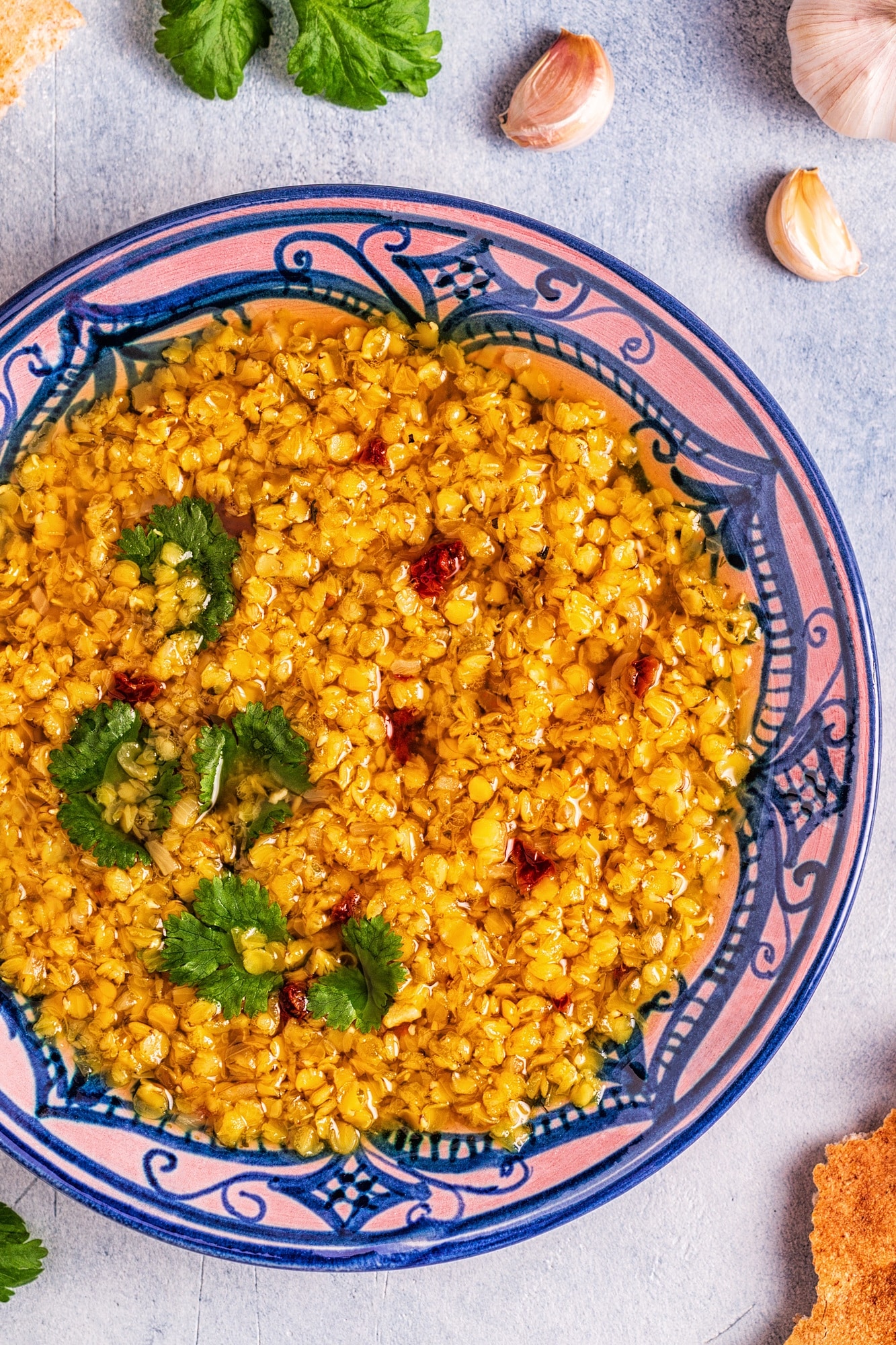
Masoor Dal Tadka: A Low-Glycemic Powerhouse
Among the pantheon of Indian lentil dishes, Masoor Dal Tadka stands out as a truly remarkable ally in managing blood sugar levels. This vibrant red lentil preparation offers substantial masoor dal benefits, including a low glycemic index of approximately 25, meaning it causes minimal blood sugar spikes after consumption.
The magic lies partly in its preparation. When cooked properly, these split red lentils retain their fiber content, which slows down carbohydrate absorption. The traditional tadka variations enhance this effect while adding delightful flavor dimensions.
A classic tadka might include cumin, mustard seeds, turmeric, and garlic sizzled in ghee. To intensify the blood sugar benefits, add fenugreek seeds or curry leaves to the tempering.
Below is a recipe that highlights the traditional flavors and blood sugar-friendly properties of this dish.
Masoor Dal Tadka
Ingredients
- 1 cup split red lentils masoor dal
- 3 cups water
- 1 medium onion finely chopped
- 1 medium tomato chopped
- 2-3 cloves garlic minced
- 1- inch piece ginger grated
- 1-2 green chilies slit (optional)
- ½ teaspoon turmeric powder
- 1 teaspoon salt to taste
- 2 tablespoons ghee or neutral oil
- 1 teaspoon cumin seeds
- ½ teaspoon mustard seeds
- ½ teaspoon fenugreek seeds optional, for added blood sugar support
- 8-10 curry leaves optional
- 2-3 dried red chilies
- ¼ teaspoon asafoetida hing, optional
- 1 teaspoon chili powder adjust to taste
Equipment
- 1 Instant Pot (or mediium saucepan)
- 1 medium saucepan (for cooking dal)
- 1 Large skillet or frying pan (for sautéing onions, tomatoes, and combining dal)
- 1 Small pan or tadka pan (for tempering/tadka)
- 1 Chef’s knife (for chopping vegetables and herbs)
- 1 Spatula or Wooden Spoon (for stirring)
- 1 Grater (for ginger)
- 1 Ladle
Method
- Rinse the masoor dal thoroughly under running water until the water runs clear.
- In a saucepan, combine the dal, water, turmeric, and salt. Bring to a boil, then reduce heat and simmer for 15–20 minutes, or until the lentils are soft and cooked through. Skim off any foam that rises to the top.
- Use a whisk or spoon to gently mash some of the cooked dal for a creamier consistency.
- In a small pan, heat the ghee or oil over medium heat.
- Add cumin seeds, mustard seeds, and fenugreek seeds. Let them sizzle until fragrant and the mustard seeds begin to pop.
- Add curry leaves, dried red chilies, and asafoetida (if using). Sauté for a few seconds.
- Add minced garlic and grated ginger. Sauté until the garlic turns golden.
- Stir in the chopped onions and cook until translucent.
- Add tomatoes and cook until soft and oil begins to separate.
- Sprinkle in the chili powder and stir well.
- Combine and Simmer
- Pour the tadka mixture over the cooked dal.
- Mix well and simmer together for 3–5 minutes to allow flavors to meld.
- Adjust salt and consistency with a little hot water if needed.
- Garnish with fresh cilantro (optional).
- Serve hot with brown rice, quinoa, or whole grain roti for a complete, low-glycemic meal.
Nutrition
Notes
- Masoor dal is low glycemic, high in fiber and protein, and low in fat.
- Tadka adds aromatic flavor and beneficial phytonutrients.
Tried this recipe?
Let us know how it was!Serving Suggestions
- For a complete, low-glycemic meal, serve hot with brown rice, quinoa, or whole wheat roti.
- Pair with sautéed greens or a fresh salad for an extra fiber boost.
Why This Recipe Supports Blood Sugar Control
- Low Glycemic Index: Masoor dal’s GI of ~25 ensures slow carbohydrate absorption, preventing blood sugar spikes.
- High in Fiber and Protein: The dal is rich in fiber and protein, which help promote satiety and steady blood glucose levels.
- Tadka Spices: Cumin, mustard seeds, fenugreek, garlic, and curry leaves not only add flavor but also have properties that support healthy blood sugar regulation.
- Minimal Oil: Using ghee or a small amount of oil enhances absorption of fat-soluble nutrients without adding excessive calories.
“Masoor dal has a low glycemic index, slowly releasing sugar into the circulation. This aids in the maintenance of steady blood sugar levels and the prevention of unexpected spikes and crashes.”
This Masoor Dal Tadka is proof that you can enjoy deeply satisfying, aromatic Indian food while supporting your health goals without compromising on taste or nutrition.
This humble dish proves that effective diabetes management doesn’t require sacrificing culinary pleasure.
Chana Dal With Spinach: Dual Benefits for Glucose Management

When chana dal and spinach combine in a single dish, they create a nutritional synergy that’s particularly potent for blood sugar management. This classic pairing offers a dual-action approach: chana dal provides slow-release carbohydrates, while spinach benefits include natural plant compounds that may enhance insulin sensitivity. Chana Dal with Spinach is a classic Indian dish that combines two diabetes-friendly ingredients for a powerful and flavorful meal. Chana dal (split Bengal gram) provides slow-release carbohydrates, high fiber, and protein, while spinach offers antioxidants, magnesium, and plant compounds that can help improve insulin sensitivity. They deliver a synergistic effect for blood sugar management and overall health.
| Nutrient | Chana Dal | Spinach | Blood Sugar Impact |
|---|---|---|---|
| Fiber | High | Moderate | Slows digestion |
| Protein | Rich | Present | Stabilizes glucose |
| Magnesium | Good | Excellent | Improves insulin function |
| Antioxidants | Moderate | High | Reduces inflammation |
Chana Dal With Spinach
Ingredients
- 1 cup chana dal split Bengal gram
- 3 cups water plus more for soaking
- 4 cups fresh spinach leaves washed and chopped
- 1 medium onion finely chopped
- 2 medium tomatoes chopped
- 3–4 cloves garlic minced
- 1 inch piece of ginger grated
- 2 green chilies slit (optional)
- 1 teaspoon cumin seeds
- ½ teaspoon turmeric powder
- 1 teaspoon coriander powder
- ½ teaspoon garam masala optional
- 1 tablespoon oil or ghee
- Salt to taste
- Fresh coriander for garnish
- Lemon wedges for serving
Equipment
- Instant Pot or heavy-bottomed pot (for cooking dal)
- skillet (for sautéing and combining dal with spinach)
- Chef’s knife (for chopping vegetables)
- Measuring spoons https://amzn.to/4k3KcZW
- Grater (for ginger)
Method
- Prep the Chana Dal
- Rinse chana dal thoroughly and soak in water for at least 1 hour (this helps with digestion and reduces cooking time).
- Drain and set aside.
- Cook the Dal
- Add soaked chana dal, 3 cups water, turmeric, and a pinch of salt in a pressure cooker or heavy-bottomed pot.
- Pressure cook for 2–3 whistles, or simmer in a pot for 30–40 minutes, until the dal is tender but not mushy.
- Prepare the Spinach
- While the dal cooks, heat oil or ghee in a large pan.
- Add cumin seeds and let them splutter.
- Add onions and sauté until translucent.
- Stir in garlic, ginger, and green chilies; cook for 1–2 minutes until fragrant.
- Add tomatoes and cook until they soften and the oil begins to separate.
- Add coriander powder and garam masala (if using).
- Combine Dal and Spinach
- Add the cooked dal (with its water) to the pan. Stir well.
- Add chopped spinach and simmer for 5–7 minutes, until spinach wilts and blends with the dal. Adjust salt and consistency with water as needed.
- Finish and Serve
- Garnish with fresh coriander.
- For a complete, low-glycemic meal, serve hot with lemon wedges, brown rice, or whole wheat roti.
Nutrition
Notes
- Chana dal is high in protein and fiber, making this dish filling and excellent for blood sugar management.
- Spinach adds antioxidants, magnesium, and additional fiber.
Tried this recipe?
Let us know how it was!Why This Recipe Supports Blood Sugar Control
- Chana Dal: Low glycemic index (GI 8–32), high in fiber and protein, slows carbohydrate absorption, and provides steady energy.
- Spinach: GI of 15, rich in magnesium and antioxidants, improves insulin sensitivity and reduces inflammation.
- Combined Benefits: The fiber, protein, and plant compounds in both ingredients help regulate blood sugar levels, support heart health, and keep you feeling full for longer.
“Chana dal’s low glycemic index, high fiber, and protein content make it an excellent food for diabetics. When prepared thoughtfully and paired with healthy sides, it can help manage blood sugar, support heart health, and keep you feeling satisfied.”
Chana Dal With Spinach is a delicious, satisfying way to harness the dual benefits of these two powerhouse ingredients for better glucose management, without sacrificing taste or tradition.
The traditional preparation involves simmering yellow split chickpeas until tender, then adding fresh spinach leaves during the final minutes of cooking. This preserves spinach’s delicate nutrients while allowing its earthy flavors to complement the nutty profile of chana dal.
Moong Dal Soup: The Light Diabetic-Friendly Option
Simmering gently on stovetops across India, moong dal soup is one of the most accessible yet powerful tools for blood sugar management in traditional diets. This light, easily digestible preparation offers substantial benefits without overwhelming the digestive system—a vital consideration for those monitoring glucose levels.
Moong dal’s natural properties make it exceptional among pulses. With its low glycemic index and high protein content, this soup creates minimal blood sugar spikes while providing sustained energy. Many nutritionists recommend it as an ideal diabetic-friendly option for light meals or recuperation.
The simplicity belies its effectiveness. An essential preparation with minimal oil, cumin, and fresh herbs offers maximum benefit without unnecessary calories or carbohydrates.
This humble soup has sustained generations, regardless of illness or health.
Bengali-Style Toor Dal: Tradition Meets Glycemic Control

Bengali-style toor dal (also known as arhar dal) is a comforting, subtly spiced dish that reflects the region’s culinary heritage while offering modern benefits for blood sugar management. Its foundation is toor dal, a low glycemic index legume rich in protein and fiber, tempered with the iconic Bengali five-spice blend, panch phoron, and often enriched with vegetables like pumpkin or pointed gourd for added nutrients and glucose-regulating properties.
Though lesser known outside Eastern India, Bengali-style toor dal represents a culinary cornerstone connecting ancient wisdom with modern nutritional science. This golden legume preparation carries forward Bengali traditions while offering remarkable glycemic benefits.
What makes this preparation special is its distinctive tempering of panch phoron (a five-spice blend) and its typical preparation, which has subtle sweetness balanced by green chilies. The slow cooking method preserves toor dal’s low glycemic index while maximizing its nutritional benefits.
For diabetics, this dish offers reliable blood sugar management through its balanced protein-to-fiber ratio. The Bengali custom of adding vegetables like pumpkin or pointed gourd further enhances its glucose-regulating properties.
Bengali-Style Toor Dal
Ingredients
- 1 cup toor dal split pigeon peas
- 2–2.5 cups water
- 1 cup pumpkin or pointed gourd parwal, peeled and diced (optional, but recommended)
- 1 medium tomato halved
- 1-2 green chilies slit
- 1 bay leaf
- 1 tsp turmeric powder
- 1 tsp ginger paste
- 1 tsp sugar or jaggery optional, for authentic, subtle sweetness
- Salt to taste
- 1.5 tbsp mustard oil or ghee for a milder flavor
- 1 tsp panch phoron Bengali five-spice: equal parts cumin, fennel, mustard, nigella, and fenugreek seeds
- 2 dried red chilies
- 1 small onion finely sliced (optional)
- Fresh coriander leaves chopped (for garnish)
Equipment
Method
- Rinse the toor dal thoroughly. Soak for 30–60 minutes if time allows (this helps with digestion and reduces cooking time).
- Combine dal, water, turmeric, salt, bay leaf, tomato, pumpkin/pointed gourd (if using), and green chilies in a pressure cooker or pot.
- Cook until the dal and vegetables are soft. A pressure cooker usually takes 2–3 whistles; in a pot, simmer covered for 35–40 minutes, adding water as needed.
- Remove the bay leaf and tomato skins. Lightly mash the dal and vegetables for a creamy texture, leaving some chunks if preferred.
- Stir in ginger paste and sugar/jaggery (if using). Simmer for another 2–3 minutes.
- Heat mustard oil in a small pan until it begins to smoke (to mellow its pungency).
- Add panch phoron and dried red chilies. Let the spices sizzle until aromatic and the mustard seeds pop.
- Add sliced onions (if using) and sauté until golden.
- Pour this tempering over the simmering dal. Mix well.
- Garnish with fresh coriander.
- Serve hot with a small portion of brown rice for a complete, low-glycemic meal.
Notes
- Glycemic Index: Low (toor dal GI ≈ 29–32; dish remains low-GI due to fiber and protein content)
Tried this recipe?
Let us know how it was!Why This Recipe Supports Glycemic Control
- Toor Dal: Low glycemic index, high fiber, and protein content slow glucose absorption and help stabilize blood sugar.
- Panch Phoron: The five-seed blend offers antioxidants and digestive benefits.
- Pumpkin and pointed Gourd are both low-glycemic, high-fiber vegetables that further slow carbohydrate absorption and may improve insulin sensitivity.
- Traditional Cooking Method: Slow simmering preserves the dal’s nutritional integrity and glycemic benefits.
“Toor dal has a low glycemic index, meaning it causes a slower and more gradual increase in blood sugar levels. This makes it a good food choice for people with diabetes who need to regulate their blood sugar levels”.
Bengali-style toor dal is a delicious, time-honored dish that seamlessly blends tradition with modern health wisdom, perfect for anyone seeking both authentic flavor and effective blood sugar management.
Served with a small portion of brown rice, it creates a complete meal that honors tradition while supporting modern health needs.
Sprouted Lentil Salad: The Raw Approach to Blood Sugar Balance
Unlike its cooked counterparts, sprouted lentil salad delivers an innovative approach to managing blood sugar levels while preserving maximum nutritional value. The sprouting process significantly enhances the nutritional profile of lentils while reducing their glycemic impact.
Sprouted lentils revolutionize diabetic nutrition by enhancing vital nutrients while naturally lowering glycemic response.
When lentils germinate, their raw nutritional potential is revealed. The sprouted benefits include increased enzyme activity, higher vitamin content, and improved mineral absorption—all essential factors for maintaining balanced blood glucose levels.
A traditional Indian sprouted moong salad combines these powerhouse sprouts with cucumber, tomatoes, and a light lemon dressing. Many diabetic patients report feeling more energetic and experiencing more stable blood sugar readings after incorporating these living foods into their diet.
The preparation is invigoratingly simple. Just rinse, drain, and enjoy!
Multigrain Dal Khichdi: Complete Protein With Stabilizing Effects
Multigrain Dal Khichdi is the ultimate one-pot meal for blood sugar management. It combines a medley of grains and lentils to deliver complete protein, high fiber, and a low glycemic load. This diabetic-friendly khichdi uses brown rice, millet, quinoa, and barley, each contributing unique benefits, alongside moong or masoor dal for optimal amino acid balance. Adding a small amount of ghee further slows digestion, making this dish a powerhouse for glucose stability.
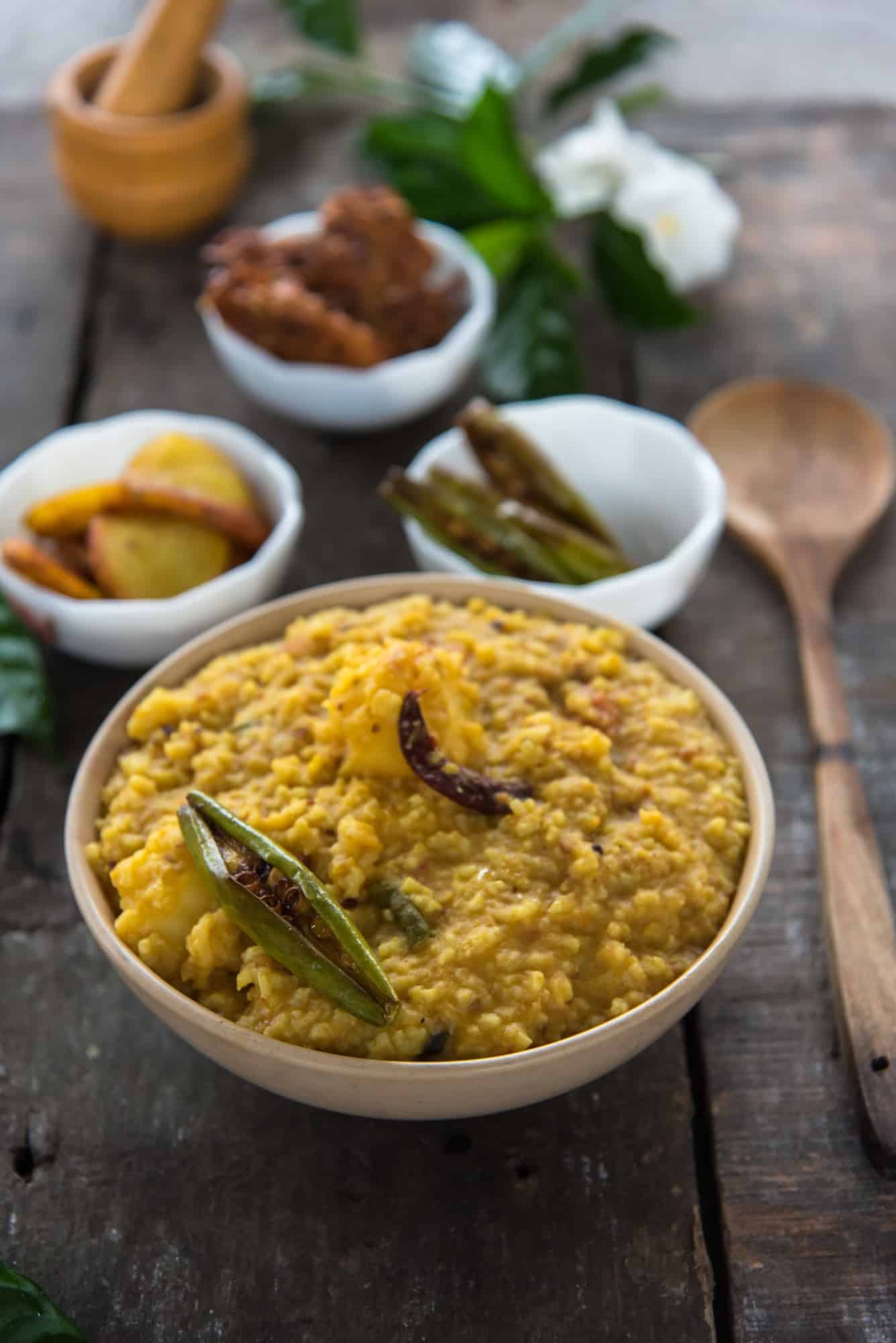
The humble dal khichdi is a cornerstone of Indian cuisine for those with diabetes. It offers remarkable blood sugar stabilizing effects while delivering complete protein. This one-pot wonder combines rice, lentils, and spices in perfect harmony, creating a meal that releases glucose slowly into the bloodstream.
Multigrain Dal Khichdi
Ingredients
- ¼ cup brown rice
- ¼ cup millet such as foxtail millet or little millet
- ¼ cup quinoa
- ¼ cup barley
- ½ cup moong dal split yellow lentils or masoor dal (red lentils)
- 1 small onion finely chopped
- 1 small tomato chopped
- 1 medium carrot diced
- ½ cup green peas
- 1 small potato diced (optional)
- 1 green chili slit (optional)
- 1 teaspoon cumin seeds
- ½ teaspoon mustard seeds
- ½ teaspoon turmeric powder
- ½ teaspoon black pepper powder
- 1- inch piece of ginger grated
- 2 cloves garlic minced
- 1 –2 tablespoons ghee use 1 tsp for lowest fat
- 5 –6 cups water
- Salt to taste
- Fresh coriander leaves for garnish
Equipment
- 1 Large pressure cooker (5–6 liter capacity) or heavy-bottomed pot with lid
- 1 Chef's Knife and
- 1 Chopping board
- 1 Mixing Bowl (for soaking grains and dal)
- 1 Ladle or large spoon
- 1 Grater (for ginger)
Method
- Prep the Grains and Dal
- Rinse brown rice, millet, quinoa, barley, and dal thoroughly. Soak together in water for 30–60 minutes to enhance digestibility and reduce cooking time2.
- Drain before cooking.
- Sauté the Base
- Heat one tablespoon of ghee in a large pressure cooker or heavy-bottomed pot.
- Add cumin seeds and mustard seeds. Let them splutter.
- Add ginger, garlic, and green chili. Sauté for 1 minute.
- Add chopped onion and cook until translucent.
- Stir in tomato, carrot, potato, and green peas. Sauté for another 2–3 minutes.
- Add Spices and Grains
- Add turmeric and black pepper powder. Mix well.
- Add the soaked and drained grains and dal. Stir to combine.
- Cook the Khichdi
- Add 5–6 cups of water and salt to taste.
- Pressure cook for 3–4 whistles, or simmer covered for 40–45 minutes until all grains and dal are soft and porridge-like. Add more water if needed for the desired consistency.
- After cooking, stir in the remaining ghee (if using) for extra flavor and glycemic benefit.
- Finish and Serve
- Garnish with fresh coriander leaves.
- Serve hot, optionally with a bowl of plain yogurt or curd for additional protein and probiotics.
Nutrition
Notes
- If using a pressure cooker, allow for natural pressure release (about 10 minutes) after cooking for the best texture.
- For a thicker or thinner consistency, adjust water as needed after cooking.
Tried this recipe?
Let us know how it was!Why This Recipe Works for Blood Sugar Management
| Grain Type | Glycemic Index | Multigrain Benefits |
|---|---|---|
| Brown Rice | Medium (50-55) | Higher fiber content |
| Millet | Low (45-50) | Magnesium-rich |
| Quinoa | Low (53) | Complete protein |
| Barley | Very Low (28) | Beta-glucan fiber |
- Multigrain Blend: Combining grains lowers the overall glycemic index and increases fiber, slowing glucose release.
- Dal (Moong or Masoor): High in protein and fiber, further stabilizing blood sugar.
- Ghee: A small amount helps slow carbohydrate absorption.
- Vegetables: Add vitamins, minerals, and fiber for satiety and nutrition.
“These Khichdis are low on the glycemic index and help diabetics in regulating hyperglycaemia and high blood sugar symptoms. Rich in fiber, these dishes will make you feel full for longer hours keeping hunger pangs at a bay.”1
Multigrain Dal Khichdi is a delicious, nourishing, and time-tested solution for balanced blood sugar, proving that comfort food and health can go hand in hand.
Among popular khichdi variations, the multigrain approach is supreme for blood sugar management. By combining several grains with moong or masoor dal, this dish creates a perfect amino acid profile while maintaining a low glycemic load. Adding just a teaspoon of ghee helps slow digestion further.
Implementing Indian Lentil Dishes in Your Weekly Meal Plan
Creating a sustainable eating plan around Indian lentil dishes requires thoughtful integration rather than sporadic inclusion. Experts recommend starting with two to three lentil-based meals weekly, gradually increasing as comfort and familiarity grow.
Meal prep becomes essential for success. Cooking larger batches of dal on weekends provides ready-to-heat options for busy weeknights, eliminating the temptation of blood sugar-spiking takeout meals.
Portion control matters greatly with lentil dishes. While nutritious, these protein-packed meals should typically occupy about one-quarter of the plate, complemented by non-starchy vegetables and a small amount of whole grains.
Many find that alternating between different lentil varieties—such as masoor for weekday lunches, chana for dinner, and moong for breakfast preparations—keeps the routine interesting while delivering diverse nutritional benefits.
Q&A: Proven Indian Lentil Dishes Control Blood Sugar
Can Indian Lentil Dishes Help Reduce the Dependency on Diabetes Medication?
Lentil dishes can indeed support diabetes management, potentially reducing the need for medication in some individuals.
Research shows that lentils offer impressive glycemic benefits—lentils’ high fiber content slows sugar absorption, while their protein helps stabilize blood glucose levels.
Medical professionals often recommend incorporating lentil-based meals into treatment plans.
However, medication changes should only occur under physician supervision, as lentil benefits complement but cannot entirely replace prescribed treatments for most people with diabetes.
How Do Indian Lentil Preparations Differ From Western Methods?
Indian lentil preparations differ primarily from Western cooking techniques and flavor profiles.
Indian dishes typically begin by tempering spices in hot oil (tadka), infusing the lentils with deep aromatic complexity. They often incorporate curry leaves, asafoetida, and whole spices like cumin and mustard seeds.
Western preparations tend to be simpler, focusing on lentils with fewer spices and more herbs, such as thyme or rosemary.
The resulting dishes have distinctly different textures and flavor intensities.
Are Canned Lentils Effective for Blood Sugar Control?
Like a hidden treasure in modern pantries, canned lentils do retain some blood sugar benefits. Studies show that they maintain their fiber and protein content, which is essential for regulating glucose levels.
However, the canning process may reduce their glycemic impact compared to fresh preparations.
For those seeking lentil convenience, canned options provide decent nutrition but may contain added sodium. Rinsing thoroughly before use helps preserve their blood sugar management properties.
Can Children With Prediabetes Safely Consume These Dishes?
Children with prediabetes can safely enjoy Indian lentil dishes as part of their health plan.
These protein-rich meals typically have a low glycemic index, supporting pediatric nutrition goals while helping with prediabetes management.
Parents should monitor portion sizes and ingredients, especially added fats or excessive carbohydrates.
A pediatrician or dietitian can provide personalized guidance tailored to the child’s specific health needs and blood sugar patterns.
Which Spices in Indian Lentil Dishes Further Enhance Glycemic Benefits?
While ancient wisdom meets modern science, specific spice combinations can dramatically enhance the blood sugar benefits of lentils.
Cinnamon, fenugreek, and turmeric contain compounds that naturally lower the glycemic index. Cumin and coriander improve insulin sensitivity, while black pepper increases nutrient absorption.
Ginger and garlic add flavor while reducing inflammation associated with blood sugar imbalances.
These aromatic additions transform simple lentil dishes into mighty therapeutic meals that satisfy taste buds and stabilize glucose levels.
Concluding our Look at the Best Indian Lentil Dishes to Manage Blood Sugar (Proven & Delicious)
Indian lentil dishes offer proven benefits for blood sugar management through their ideal combination of protein, fiber, and low glycemic impact. After incorporating chana dal into her weekly routine, 62-year-old Meena saw her HbA1c levels drop from 7.2% to 6.5% in three months. By enjoying these flavorful traditional recipes, individuals can embrace delicious meals that nourish while naturally regulating glucose levels.


